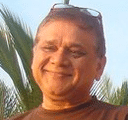Respiratory Failure: Treatment, Cost and Side Effects
Last Updated: Jan 20, 2025
What is the Respiratory Failure?
Respiratory failures occur when a certain fluid fills up the air sac in the lungs. This causes the lungs to stop releasing oxygen to the blood which in return does not allow oxygen rich blood to reach the other organs in the body. Due to this, a respiratory failure can also develop if the lungs cannot remove carbon dioxide from the blood. When the capillaries or tiny blood vessels which surround the air sacs cannot exchange carbon dioxide for oxygen respiratory failure becomes a risk. Respiratory failures can be of two types: acute or chronic. Another type of respiratory failure called acute on chronic develops when a person who is already suffering from chronic respiratory failure shows symptoms which have worsened suddenly.
In order to diagnose the respiratory failure, an arterial blood bag is required which helps in providing valuable information on the levels of oxygen and carbon dioxide in the blood. The arterial bag consists of a needle which is plunged in the wrist where the pulse can be easily felt. For times when the pulse is weakened, different sites like the groin or even the elbow can be used. In order to find out the underlying cause, blood tests, X-Rays, thyroid function tests, troponin blood tests, spirometry or even a heart ultrasound can also be performed.
How is the Respiratory Failure treatment done?
Immediate admission to the hospital is required for patients who have acute respiratory failures or have a new diagnosis of chronic respiratory failure. Resuscitation and admission to the ICU or high dependency unit on artificial life support or ventilation is required for such patients. For patients with chronic respiratory failure, the treatment can be given at home itself. However, this completely depends on the severity of the condition. The underlying causes and other illnesses are also to be kept in mind. For some patients arrangements for oxygen support and home ventilation can also be made.
The aim of the treatment is to improve the blood oxygen levels while removing the harmful carbon dioxide from the body. In order to do this, artificial ventilation is required. More treatment is required to treat the underlying cause as well. For the treatment oxygen will be given through a mask. Non-invasive ventilation can also be used. This is a popular alternative for invasive ventilation and is commonly used today. NIV is used for cases when the body shows low blood oxygen level and high Carbon dioxide level. Another form of treatment called extracorporeal membrane oxygenation (ECMO) is also used. This technique is relatively recent and is used for patients of all ages. In order to treat the underlying cause of the condition, antibiotics and steroids are used.
Who is eligible for the treatment? (When is the treatment done?)
Any individual who shows symptoms of rapid breathing and confusion can have high carbon dioxide level in their body and should be immediately checked. People who have low oxygen level symptoms are unable to breathe properly and have a bluish coloration on the skin, fingertips and lips. This indicate towards a severe problem of respiratory failure.
Who is not eligible for the treatment?
Individuals who do not show symptoms of having any breathing problems are not eligible for the treatment.
Are there any side effects?
Side effects of ventilation can include irritation or the infection of the throats and lungs. It can also cause bleeding of the lungs. There can be damage in the lung tissues as well. Other risks of ventilation include the possibility of collapsed lungs, sinus infection, oxygen toxicity and damage of the vocal cords as well.
What are the post-treatment guidelines?
Patients who face problems of respiratory failure have special nutritional needs which need attention. Patient and the family should be aware and educated about every aspect of the treatment in order to avoid any possibility of readmission. During the process of discharge, teach the patients how to deal with the risks of their specific condition.
How long does it take to recover?
Chronic respiratory failure takes a long time to recover and doctors suggest admission to a long-term care centre for the patients in such situations. For acute chronic respiratory failure, if the patient is completely stable, he/she is easily discharged after a few days or weeks, depending on his/her condition.
What is the price of the treatment in India?
The charges of ventilation for a person who is suffering from respiratory failure problems varies for each hospital. The charges are on a daily basis and can be anything around Rs 2,000 to more than Rs 10,000 as well. On the other hand, non-invasive ventilation can be costlier.
Are the results of the treatment permanent?
Individuals who are young and develop this problem have a higher rate of survival than those who develop this problem in old age. However, permanent recovery is possible in both the cases if treated properly.
What are the alternatives to the treatment?
In cases where the condition does not need immediate attention, alternative treatment of various medications can also be taken. You can also consider taking vitamins or supplements to deal with the issue.
Table of content
15+ Years of Surgical Experience
All Insurances Accepted
EMI Facility Available at 0% Rate
Find Pulmonologist near me
Ask a free question
Get FREE multiple opinions from Doctors

